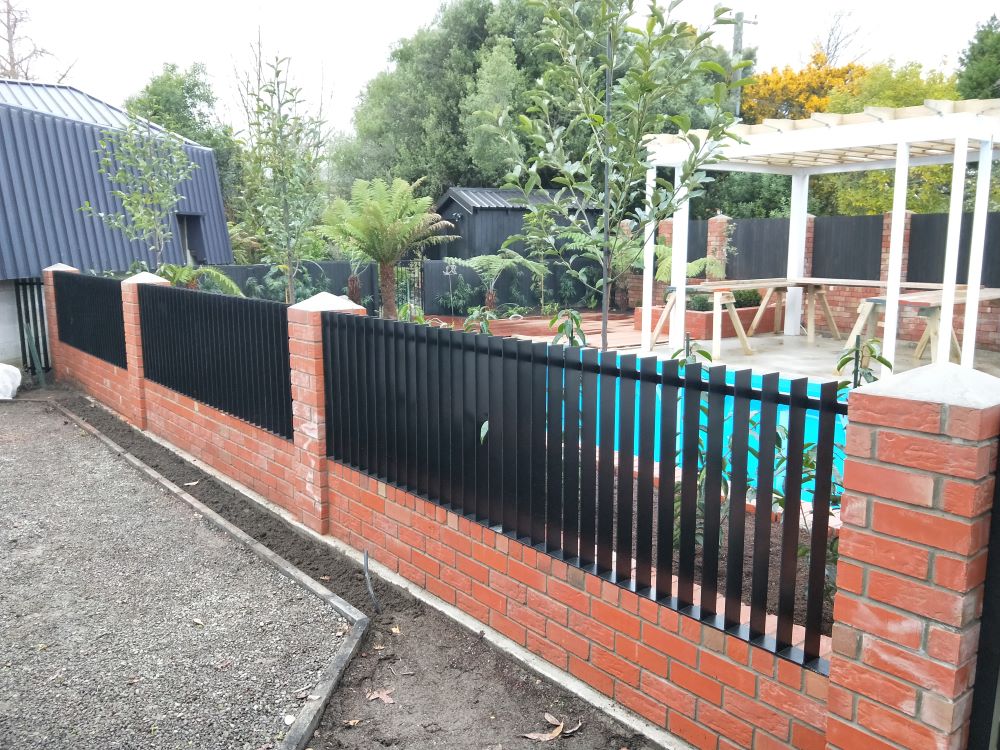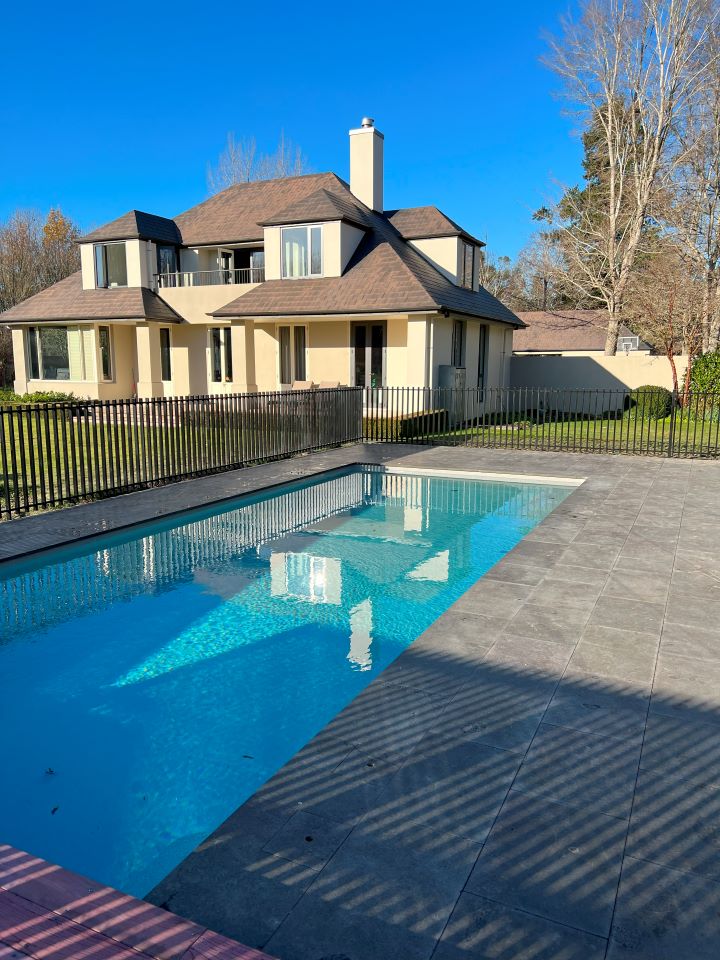Pool fencing in Christchurch is not just a stylistic choice or a landscaping feature—it is a legal requirement designed to protect lives, especially the lives of young children. Across New Zealand, strict regulations are in place to ensure that any property with a pool is adequately fenced off in a way that prevents unsupervised access.
Despite good intentions, many Christchurch homeowners still fall into avoidable traps during planning, installation, or maintenance. Whether it is choosing the wrong materials, failing to meet safety standards, or unintentionally violating compliance rules, these common mistakes can lead to fines, failed inspections, and even tragic accidents.
Fortunately, by understanding the local regulations and learning from others’ missteps, you can avoid these pitfalls and ensure your pool area is safe, compliant, and built to last.
Understanding Pool Fencing Regulations in Christchurch
Why Pool Fencing Rules Exist in New Zealand
The regulations surrounding pool fencing in New Zealand stem from a singular and serious objective: to reduce the risk of accidental drownings, particularly among children under five years of age. Water Safety New Zealand statistics show that home pools remain a significant drowning hazard, which is why the government enforces clear standards to control access.
Pool fencing is mandatory nationwide, but while the national framework sets the baseline, local councils like Christchurch City Council are responsible for enforcing the rules and conducting inspections. The emphasis is always on passive safety measures—those that prevent harm without requiring human action—and this is where properly installed and maintained fencing plays a vital role. Without these protections, the risk of unsupervised access and potential tragedy increases dramatically.
Christchurch-Specific Pool Fence Compliance
When it comes to pool fencing Christchurch regulations, homeowners must adhere to both national and local requirements. The Christchurch City Council enforces rules under the Building Act 2004 and the Fencing of Swimming Pools Act 1987 (replaced by specific clauses in the Building Code). Your pool fence must be at least 1.2 metres high, with no gaps that a child could squeeze through, and gates must be self-closing and self-latching. Inspectors assess more than just measurements—they look at gate operation, climbable objects within proximity, and whether the fencing is structurally sound.
Consent is required for new pool fencing installations, and homeowners must apply for a Code Compliance Certificate once the work is complete. Failing to meet any of these requirements could result in failed inspections, mandatory rework, or penalties, making it vital to get things right the first time.
Common Design Mistakes Christchurch Homeowners Make
Installing Pool Fencing That Is Too Low
One of the most frequent design mistakes in pool fencing Christchurch projects is installing fences that fall below the required height. Regulations clearly state that the minimum height for any pool fence must be 1.2 metres from the finished ground level. However, this is often misjudged when the land is sloped, uneven, or landscaped after installation.
For instance, if earth is later built up near the fence line or paving is added post-installation, the effective height of the fence can be compromised. Homeowners who do not consider the impact of landscaping changes may unknowingly invalidate their compliance status. To avoid this, all measurements should be taken after landscaping is complete, and ongoing checks should be made if the ground level changes over time.
Choosing Non-Compliant Materials
Another costly oversight in pool fencing Christchurch homes is the use of non-compliant materials. While homeowners may be tempted by certain aesthetic preferences, not all materials meet the Building Code standards for pool safety.
Timber may warp or rot over time if not properly treated, while some decorative metals might have climbable features or sharp edges. Glass and aluminium are the most approved options, but even these must be installed correctly to ensure compliance.
Christchurch’s coastal climate also adds another layer of complexity—materials need to withstand exposure to wind, salt, and moisture without degrading. Choosing high-quality, compliant materials that are engineered for local conditions is the best way to ensure your pool fence remains both attractive and functional for years to come.
Ignoring Pool Fence Gate Requirements
Among the most critical yet overlooked aspects of pool fencing Christchurch residents need to consider are the gates. A compliant gate must open away from the pool, close automatically from any position, and latch securely without manual assistance.
Despite these clear requirements, many homeowners install gates that fail to self-close consistently, have faulty latches, or do not swing in the correct direction. These issues can arise due to poor installation, low-quality hardware, or gradual wear and tear that goes unnoticed.
Since the gate is often the primary point of entry, any failure in its function immediately compromises safety. Regular maintenance checks and prompt repairs are key, along with using hardware designed specifically for pool fencing applications.

Safety Oversights During Pool Fence Installation in Christchurch
Leaving Climbable Objects Near the Fence
Even the most well-built pool fencing in Christchurch can be rendered ineffective if climbable objects are left too close. Under New Zealand regulations, a 1.2 metre clear zone must be maintained around the outside of the pool fence. This means no trees, furniture, garden tools, or even planter boxes should be within this zone if they could provide a foothold for a child.
It is surprisingly easy to overlook small features like trellis panels, outdoor heat pumps, or compost bins, which may seem harmless but could pose a safety risk. Homeowners often place decorative features or temporary furniture near the fence without realising the compliance implications. It is important to regularly assess the area around your pool fence and remove or relocate any potential hazards to maintain safety and legality.
Gaps That Are Too Wide
Proper spacing between pool fence components is another common area where Christchurch homeowners make mistakes. The Building Code requires that gaps between vertical bars or panels must be less than 100mm, ensuring a child cannot squeeze through.
However, this guideline is frequently ignored or misinterpreted during DIY installations or when using pre-fabricated panels not intended for pool use. Horizontal gaps or step-ups due to uneven terrain also need to be sealed or adjusted.
Additional attention should be paid to pet doors, drainage grates, and retaining walls adjacent to pool fencing, which may inadvertently create an access point. Regularly inspecting your fence for shifting panels, ground erosion, or accidental modifications will help maintain compliant gap measurements.
DIY Installation Without Proper Knowledge
Many Christchurch homeowners consider DIY pool fencing as a way to save money, but without a strong understanding of local codes and best practices, this route often leads to non-compliant results.
The biggest risks in DIY pool fencing Christchurch projects include incorrect measurements, substandard materials, improper gate hardware, and failure to account for climbable hazards. While the initial cost savings might seem appealing, failed inspections and the need for costly rework can quickly negate any financial advantage.
For something as crucial as pool safety, involving a licensed professional is highly advisable. Qualified installers understand both the functional and legal aspects of the job and can help you navigate council requirements with confidence.
Mistakes That Affect Pool Fence Aesthetics and Value
Pool Fencing That Clashes With Landscaping
A mistake often made during pool fencing Christchurch projects is treating the fence as an afterthought rather than integrating it into the overall landscape design. When the fencing style clashes with the surrounding garden, deck, or pool area, the result can feel disjointed and diminish your outdoor space’s visual appeal.
For example, a sleek glass fence might feel out of place in a rustic, native planting scheme, while a heavy timber fence could overwhelm a minimalist courtyard. To avoid this, homeowners should plan their pool fencing at the same time as other landscaping features for privacy, style and safety. A coordinated approach helps ensure that materials, colours, and lines flow harmoniously across the entire yard, adding value and aesthetic cohesion.
Neglecting Long-Term Maintenance
Another mistake Christchurch homeowners make is assuming that once their pool fencing is installed, it no longer needs attention. In reality, all pool fencing—regardless of material—requires regular maintenance to stay safe and compliant. Glass panels need cleaning to prevent clouding and mildew, while aluminium or steel components may develop corrosion if not treated properly.
Christchurch’s coastal and sometimes frosty climate adds additional wear and tear that cannot be ignored. Hinges, latches, and gate-closing mechanisms must also be checked frequently, as even minor failures can compromise the fence’s ability to meet legal standards. Scheduling seasonal maintenance and treating your fence like any other structural feature of your home will keep it both functional and visually appealing.
How to Avoid These Pool Fencing Mistakes in Christchurch
Work With Local Experts Who Know Christchurch Rules
One of the most effective ways to avoid mistakes in pool fencing Christchurch homes is to work with professionals who are experienced with the region’s unique climate and council requirements. Local installers are familiar with the Christchurch City Council processes and can often anticipate compliance issues before they arise.
They also know which materials perform best in the area’s mix of coastal air, temperature swings, and occasional earthquakes. By choosing a reputable Christchurch-based contractor, you ensure that your fence meets both aesthetic and functional expectations without the risk of legal hiccups.
Get a Pre-Inspection Before Your Final Sign-Off
A pre-inspection can be a valuable step in the pool fencing Christchurch installation process. This involves having an experienced professional or council representative review the fencing prior to final completion. It allows any potential compliance issues to be identified early, such as incorrect latch placement or height miscalculations.
Fixing these problems before the final inspection reduces the likelihood of rejection and costly rework. Pre-inspections also give homeowners peace of mind that their pool fencing investment is not only safe but also legally sound.
Use a Checklist to Ensure Full Compliance
A thorough checklist is a powerful tool for avoiding the most common pool fencing Christchurch mistakes. It should cover every detail, from material types and fence height to gate function and surrounding object clearance. A good checklist includes landscaping considerations, drainage impacts, and local climate effects.
Using such a list throughout your project—from planning to post-installation—keeps you focused and reduces the risk of overlooking critical compliance points. Many local contractors or council websites provide free checklists to help you stay on track.
Final Thoughts on Pool Fencing Christchurch Compliance
Whether you are building a new pool area or updating an existing one, getting your pool fencing Christchurch compliance right from the start is one of the most important steps you can take. The most common mistakes—from incorrect heights and faulty gates to poor material choices and overlooked safety zones—are often the result of rushing the process or misunderstanding the rules.
By educating yourself, working with knowledgeable professionals, and committing to long-term upkeep, you can create a pool fence that is not only legally compliant but also a valuable asset to your property. In the end, well-executed pool fencing is about more than just ticking boxes; it is about creating a safe, attractive, and enduring space for your family and guests to enjoy.
